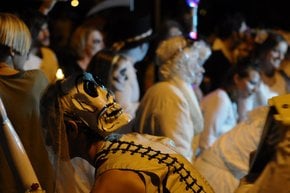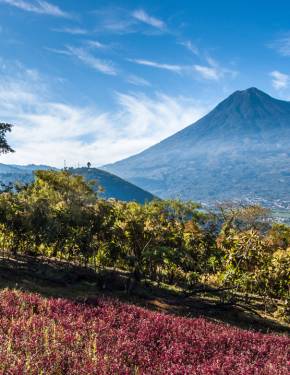Día de los Muertos or Day of the Dead 2026 in Mexico
Painted faces in colorful Mexican clothes reunite with their dead loved ones through cemetery celebrations
Dates: October 31–November 2
Dia de los Muertos, or Day of the Dead, is a vibrant celebration held annually in Mexico, inviting both locals and visitors to honor the lives of deceased loved ones. Unlike the somber tones often associated with death, this Mexican tradition embraces a festive spirit, blending indigenous Mesoamerican rituals with European influences. The event is not just a remembrance of those who have passed but a celebration of life itself.
Activities and Experiences
During the Day of the Dead celebrations, visitors can experience an array of cultural activities that highlight the rich traditions of Mexico. Key events include the construction of ofrendas (altars) adorned with marigolds, candles, and photographs of the deceased. These altars serve as a focal point in homes and public spaces, such as cemeteries and town squares, where families gather to pay homage to their ancestors. Traditional Mexican foods, such as pan de muerto (bread of the dead) and sugar skulls, are prepared and offered as part of the festivities.
In addition to the food and altars, vibrant parades and public performances are held throughout Mexico. According to the organizers, one of the most iconic dances to witness is La Danza de Los Viejitos (the dance of the little old men), where young men and boys dress up as elderly figures and perform lively routines. Visitors are encouraged to participate by dressing in traditional Mexican attire and painting their faces to resemble calaveras (skulls), further immersing themselves in the celebratory atmosphere. It doesn't matter whether you belong to a celebrating family—if you behave respectfully and follow common rules, you will be welcome.
Schedule and Program
The Day of the Dead celebrations typically span from October 31 to November 2. However, in major cities like Mexico City, festivities often begin earlier and extend for a week or more. The highlight of the celebrations is the grand parade, Desfile de Día de Muertos, which will take place on Saturday, November 2. The Mexico City Government has announced that this vibrant event will feature over 60 floats, 5,000 participants, including volunteers from various groups, and agencies, as well as several musical performances.
The parade will begin at 2 pm, starting from the Chapultepec Lions and concluding at the Plancha del Zócalo. Clara Brugada, the Head of Government of Mexico City.
Throughout the week, various events are organized, including street markets, musical performances, and art exhibitions. Many museums and cultural centers also host special exhibits and workshops that delve into the history and significance of the holiday. Visitors are encouraged to check local schedules for specific event timings and locations.
Tickets
Entry to most Day of the Dead events is free, particularly those held in public spaces. However, some museums or organized tours may require tickets. As organizers indicate, early reservations for popular events are recommended, especially in Mexico City, where celebrations draw large crowds.
Location and Infrastructure
Celebrations occur nationwide, with notable festivities in regions like Mexico City, Oaxaca, and Michoacan. Mexico City offers a mix of traditional and contemporary events, making it a convenient destination with ample accommodation options. The city is accessible via major international airports and boasts a robust public transport system for ease of navigation.
For those seeking a more intimate experience, Oaxaca's celebrations are renowned for their authenticity and deep spiritual significance. Located approximately 285 miles southeast of Mexico City, Oaxaca is accessible by plane or bus, with various tours available to guide visitors through the region's unique traditions.
History of the Festival
The origins of Dia de los Muertos trace back over 3,000 years to pre-Hispanic Mesoamerica, where indigenous cultures such as the Aztecs held rituals to honor the dead. The festival's modern form is a synthesis of these ancient practices and Catholic influences introduced by Spanish colonizers. Central to the holiday's symbolism is La Catrina, an elegantly dressed skeleton figure created by Mexican artist Jose Guadalupe Posada in the early 20th century. Initially a satirical depiction of the Mexican elite's obsession with European customs, La Catrina has since become an enduring icon of the Day of the Dead.















































